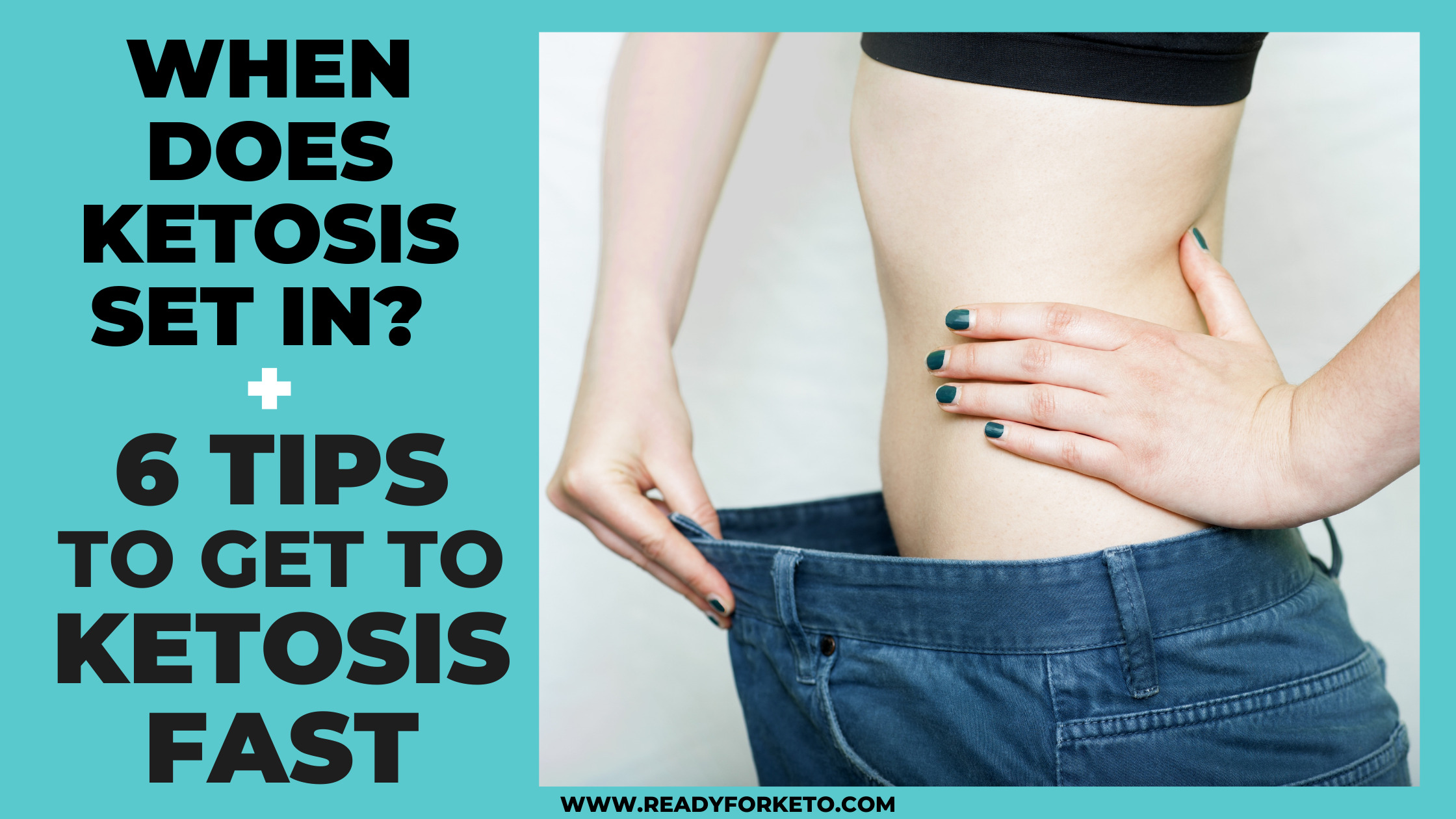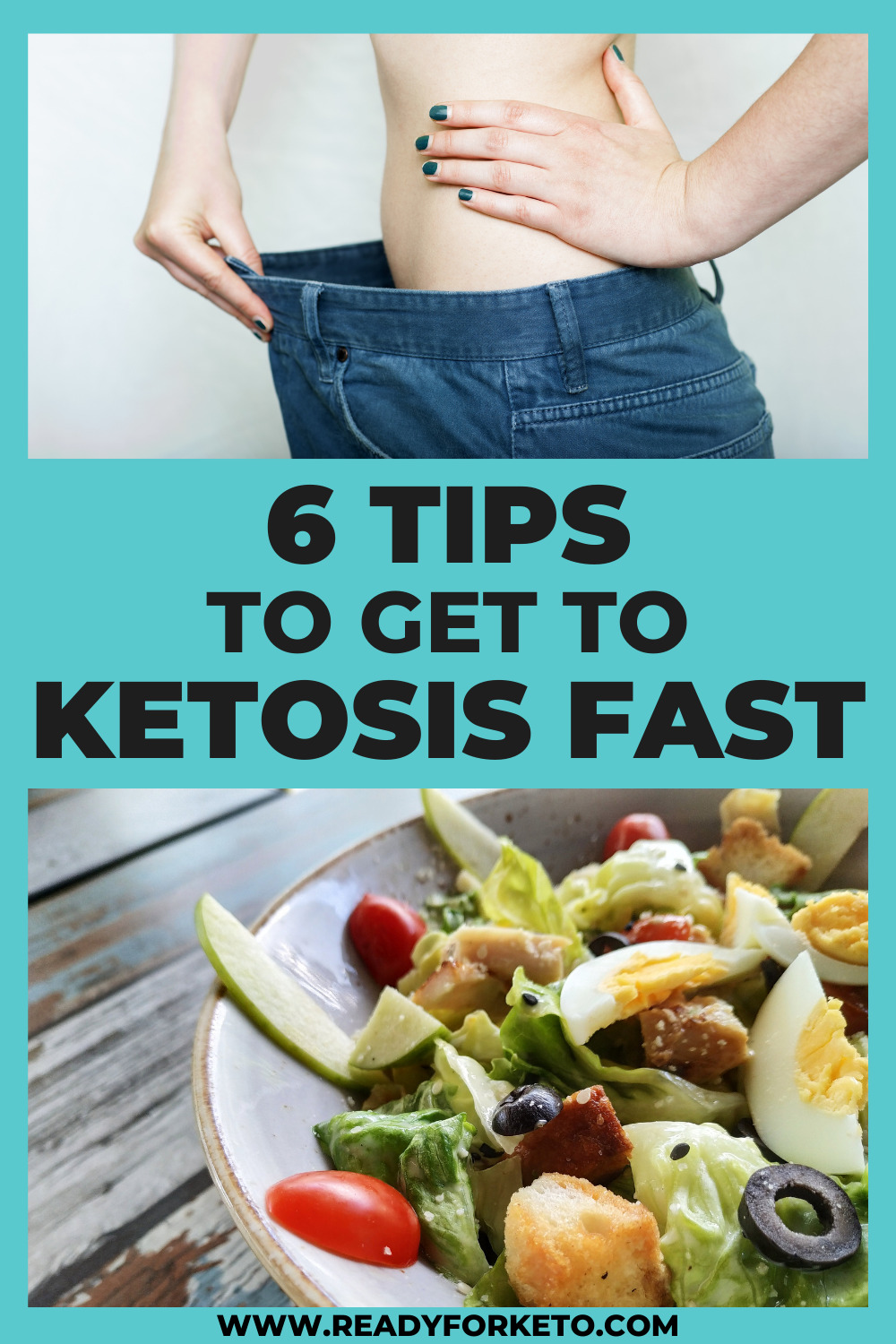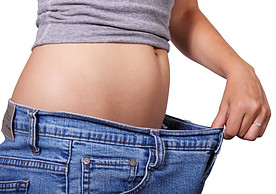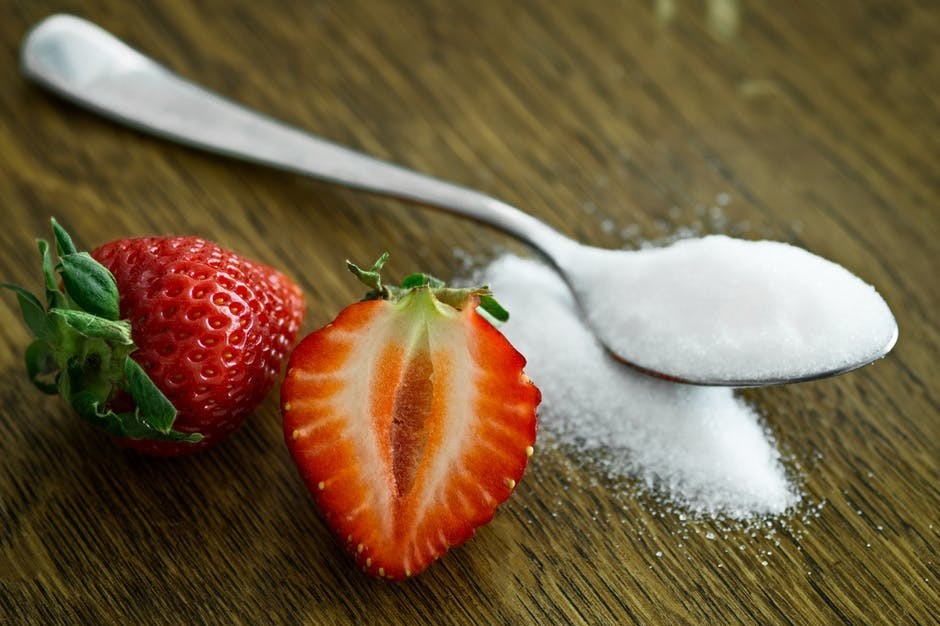Many people have difficulty getting into the state of ketosis when starting a keto diet.
In this post, we have summarized the 6 best tips on how to get into ketosis faster so you can improve your health.

The ketogenic diet is one of the most effective methods of biohacking. This diet is a very effective way to lose weight, improve mental performance, balance hormone levels, and treat various diseases such as diabetes and epilepsy.
Why is this diet so effective? Because of the condition of ketosis, which is the result, and the goal of the keto diet; it is the metabolic process that offers these several health benefits, but it takes some time before ketosis sets in.
It is effective because, during ketosis, your body converts fat into ketones and begins to use them as its main energy source instead. So, your body uses fat for energy!
Studies have shown that ketogenic diets are very beneficial for weight loss, also because of their appetite-suppressing effects.
Recent research suggests that ketosis may also be helpful in type 2 diabetes and neurological diseases, among others. Read more about how the keto diet may help those with diabetes here.
But how long before ketosis starts and can this process be sped up?
When Does Ketosis Set In? 6 Tips How to Get into Ketosis Fast!
How Long Does It Take Your Body to Go Into Ketosis?
A ketogenic diet has a number of health benefits, including:
- Weight loss: With ketosis, you will have less hunger and ravenous attacks, while at the same time you will be full longer
- Reduced risk of disease: Ketogenic nutrition reduces the risk of diseases such as heart disease, type II diabetes, and even cancer
- More energy: During ketosis, you have less blood sugar fluctuations and more energy overall, as well as an increased ability to think
But how long does it take to experience these benefits of ketosis?
Unfortunately, you will not reach ketosis overnight.
Your body has burned sugar and carbohydrates as fuel all its life. Therefore, it takes some time to adapt to burning fat and ketones as a new energy source.
Roughly speaking, it usually takes between 48 hours and a week for you to be in full ketosis.
The duration depends on your activity level, lifestyle, body type, and carbohydrate intake. Fortunately, there are several ways you can speed up the process and reach ketosis faster.
There are signs and symptoms of ketosis you can look for. You can measure ketosis, for example with a special urine or blood meter.
To get into ketosis quickly, you can practice intermittent fasting in combination with your ketogenic diet, for example. Another helpful way to speed up ketosis is to take special supplements.
But please always remember: once you are in ketosis, there is no guarantee that you will just automatically remain in the state of ketosis.
As soon as you start eating a carbohydrate meal again, carb-cycling, or temporarily increasing your carbohydrate intake for exercise, your body may start burning glucose again, meaning you have fallen out of ketosis.
To return to the fat-burning state of ketosis, simply follow the same procedure that got you into ketosis in the first place.
6 Tips to Get to Ketosis Fast

Follow the steps below to get to ketosis faster:
#1 Reduce the carbohydrates.
The reduction of carbohydrates in your diet is by far the most important factor in achieving ketosis.
Normally your cells use glucose or sugar as their main fuel. However, most of your cells can also use other fuel sources. These include both fatty acids and the so-called ketones, also known as ketone bodies.
Your body stores glucose in the liver and muscles as glycogen.
If the carbohydrate intake is now very low, the glycogen stores are emptied and the insulin level drops. In this way, fatty acids can be released from the body’s fat deposits.
Your liver converts some of these fatty acids into the ketone bodies acetone, acetoacetate, and beta-hydroxybutyrate. These ketones can then be used as an energy source for the brain.
The maximum amount of carbohydrates per day that leads to ketosis is slightly different for each person.
The general amount of carbohydrates for the keto diet is about 20-30 grams per day. If you do a lot of exercises, this value may even be increased to 100 grams.
Some have to limit carbohydrates to 20 grams per day, while others can take-in twice that amount and still get into ketosis quickly.
For this reason, it is often recommended limiting carbohydrates to 20 grams or fewer per day for two weeks to ensure that ketosis is reached quickly.
After this time, you can very slowly incorporate small amounts of carbohydrates back into your diet as long as the ketosis is maintained.
In a typical low-carb diet like the Atkins diet, it is often sufficient to gradually reduce the carbohydrates from the diet. But not with the keto diet!
So if you want to get into ketosis quickly, a drastic reduction in carbohydrate intake is an absolutely necessary step.
Pay close attention to your daily carbohydrate intake during the first week so that ketosis sets in quickly. Check your meals for hidden carbohydrates and stick mainly to ketogenic foods without carbohydrates.
To sum it up…
Limiting carbohydrates to 20-50 net kilograms per day lowers blood sugar and insulin levels, resulting in the release of stored fatty acids, which your liver converts into ketones. This will automatically get you into ketosis faster.
#2 Increase the intake of healthy fats.
Eating lots of healthy fat can increase your ketone levels and help you get into ketosis quickly.
A ketogenic diet not only minimizes carbohydrates but is also very high in fat. Healthy fats are a big part of your keto nutrition plan.
Make sure that your daily fat intake is 70-80% of your total calorie intake. This will help your body make the transition to using fat as your primary fuel.
A ketogenic diet for the treatment of epilepsy is even higher in fat intake, with typically 85-90% of daily calories from fat.
However, an extremely high fat intake does not necessarily lead to higher ketone levels.

A three-week study with 11 participants compared the effects of fasting with different amounts of fat on the ketone levels in the breath.
Overall, it was found that ketone levels were fairly similar in people consuming 79% or 90% of the calories from fat.
As fat is such a high proportion of a ketogenic diet, it is also important to choose high-quality sources.
Good fats include olive oil, avocado oil, coconut oil, butter, lard, and tallow. In addition, there are many healthy, high-fat foods that are also very low in carbohydrates.
Stick to the following foods that are rich in healthy fats to get into ketosis quickly:
- Oils such as coconut oil, virgin olive oil, MCT oil
- Fatty meat, egg yolk, organic butter, or ghee
- Fatty nuts and nut butter (but only in moderation!)
- Vegetable fats like avocados, olives, or coconut butter
However, if your goal is to lose weight, you should be careful not to consume too many calories, as this can cause your weight loss to stagnate.
To sum it up…
Consuming at least 70-80% of the calories from fat helps you increase your ketone levels. Choose from a variety of healthy fats from plant and animal sources to speed up ketosis.
#3 Watch your protein intake.
To achieve ketosis, adequate but not excessive protein intake is required.
The classic keto diet that is used for epilepsy patients is restricted in both carbohydrates and proteins in order to maximize ketone levels. This same ketogenic diet may also be beneficial for cancer patients, as it can limit tumor growth.
However, for most people, it is not a good idea to drastically reduce proteins just to increase ketone production.
You should always consume enough protein to maintain body functions and maintain lean muscle mass.

First, it is important to consume enough protein to supply the liver with amino acids that can be used for gluconeogenesis.
In this process, your liver provides glucose for the few cells and organs that cannot use ketones as fuel, such as your red blood cells and parts of your kidneys and brain.
Second, protein intake should be high enough to maintain muscle mass when carbohydrate intake is low, especially if you are on a keto diet for weight loss.
Although weight loss typically results in loss of muscle and fat, eating sufficient protein in a very low-carbohydrate diet can help maintain muscle mass.
Several studies have shown that the maintenance of muscle mass and physical performance is maximized when protein intake is in the range of 1.2-1.7 grams per kilogram of lean mass.
In a study of 17 obese men, a ketogenic diet that provided 30% of the calories from protein for four weeks resulted in an average blood ketone level of 1.52 mmol/L. This is well within the recommended and optimal ketosis range of 0.5-3.0 mmol/L of dietary ketosis.
To calculate your protein requirement for a ketogenic diet, multiply your ideal body weight in kilos by 1.2 to 1.7. For example, if your ideal body weight is 59 kg, your daily protein intake should be 71-100 grams.
Most people often confuse a ketogenic diet with other low-carb/high-protein diets. However, keto is an extremely low-carbohydrate and moderate protein diet.
Your daily protein intake should be only about 25% of your daily calorie intake. This can be either more or less than your current protein intake.
To ensure that you get into ketosis quickly and don’t consume too much protein, simply stick to high-fat protein sources and eat less lean protein sources.
To sum it up…
Eating too little protein can lead to loss of muscle mass, while excessive protein intake can suppress ketone production. Your daily protein intake on a ketogenic diet should only be about 25% of your daily calorie intake to get into ketosis faster.
#4 Use coconut oil and MCT oil in your ketogenic diet.
Consuming coconut oil can help you reach ketosis quickly.
Coconut oil contains fats called medium-chain triglycerides (MCTs).

Unlike most fats, MCTs are quickly absorbed and transported directly to the liver, where they can be used immediately as an energy source or converted into ketones.
It is believed in medicine that the consumption of coconut oil may be one of the best ways to increase ketone levels in people with Alzheimer’s disease and other diseases of the nervous system.
Although coconut oil contains four types of MCTs, 50% of its fat comes from lauric acid.
Some studies suggest that fat sources with a higher percentage of lauric acid may cause a more persistent level of ketosis. This is because it is metabolized more slowly than other medium-chain triglycerides.
If you add coconut oil or MCT oil to your diet, start slowly to minimize digestive problems like stomach cramps or diarrhea.
Start with one teaspoon a day and work your way up to two to three tablespoons a day for a week.
To sum it up…
The consumption of coconut oil or high-quality MCT oil supplies your body with MCTs, which are quickly absorbed by your liver and converted into ketone bodies. This accelerates the transition to the ketosis state many times over.
#5 Intermittent Fasting.
Another way to get into ketosis quickly is Intermittent Fasting.
Fasting is often associated with ketosis. Interval fasting offers a number of health benefits, including improved concentration and lower blood sugar levels.
In combination with a ketogenic diet, it can help you get into ketosis faster. Apart from that, intermittent fasting alone is very effective in reducing weight and fat.
In combination, intermittent fasting and ketosis is the best diet for general health.
Children with epilepsy are sometimes fasted for 24-48 hours before starting a ketogenic diet. This is done to get into ketosis quickly so that seizures can be reduced earlier.
Intermittent fasting, which includes regular phases of short-term fasting, can also trigger ketosis, according to studies.
So if you want to get into ketosis faster, do intermittent fasting together with your ketogenic diet.
To sum it up…
Fasting, intermittent fasting, and “fat fasting” can help you get into ketosis relatively quickly. Especially intermittent fasting and ketosis in combination are best suited to accelerate ketosis.
#6 Exercise more.
A growing number of studies have shown that ketosis can be beneficial for athletic performance, including endurance sports.
In addition, exercise can help you get into ketosis quickly.
When you exercise, your body uses up its glycogen stores. Normally, these are replenished when you eat carbohydrates, which are broken down into glucose and then converted into glycogen.

However, if carbohydrate intake is minimized during ketogenic nutrition, your glycogen stores will remain low. In response, your liver increases its production of ketone bodies, which can be used as an alternative fuel source for your muscles.
One study found that at low blood ketone concentrations, exercise increases the production of ketone bodies.
In addition, training in a fasted state has been shown to increase ketone levels.
In a small study, nine older women exercised either before or after a meal. Their blood ketone levels were 137-314% higher when they exercised before a meal than when they exercised after a meal.
Although exercise increases ketone production, it can take one to four weeks for your body to adapt to using ketones and fatty acids as an energy source. During this time, physical performance may be temporarily reduced.
To sum it up…
Physical activity can increase ketone levels during ketogenic nutrition. This effect can be further enhanced by training in a fasted state.
Why Am I Not Going into Ketosis?
If you have tried all the above methods and still have not reached a ketogenic state, there may be one of the following causes.
Now it is important to take a close look at your current diet and daily habits that prevent you from getting into ketosis quickly.
You eat too much protein.
One of the most common mistakes in starting a ketogenic diet is eating too much protein.
Protein is a building block of life and a necessary part of any diet. However, it is important to remember that ketosis requires a high-fat, moderate protein intake.
The reason for this is: Glucose is your body’s preferred source of energy. In the presence of glucose, your body will refuse to use fat (ketone bodies) as an energy source. But even without carbohydrates, there is another way your body can use glucose as fuel: by breaking down proteins.
If you consume more protein than necessary, your body can enter a state known as gluconeogenesis. Gluconeogenesis is the process by which the body converts amino acids into glucose, using glucose as a source of energy.
Whether your body converts amino acids or carbohydrates into glucose, the results are the same: Your insulin level rises, which lowers the ketone level in your blood and kicks you out of ketosis.
You’re not eating enough fat.
By now, you know for sure that a ketogenic diet requires the intake of a lot of healthy fats.
However, many people underestimate how much fat they need to consume.
If you want fatty acids to become your body’s new preferred energy source, this energy source must be available first. That makes sense, doesn’t it?
To speed up ketosis, up to 80% of your daily calories should come from fat.
Here’s an example: If you eat 2,000 calories a day, 1,600 of those calories should come from fat. This corresponds to about 144-170 grams of fat.
Quantity and quality are equally important, so you should consume fats from high-quality sources such as omega-3 and omega-6 fatty acids.
You just don’t eat enough.
When you switch to a ketogenic diet, it is sometimes difficult to eat enough calories.
Fat is incredibly satisfying and sometimes acts as an appetite suppressant.
If your body does not get enough calories, it goes into starvation mode. This causes it to “hoard” body fat instead of using it for energy. This can also cause several metabolic and thyroid problems.
As a beginner in the keto diet, you should track your calories to make sure you eat enough to get into ketosis faster.
Bonus Tips to Get Into Ketosis Faster
When your body enters ketosis for the first time, it changes its preferred fuel source.
This transition can cause flu-like side effects in some people, including fatigue, headaches, dizziness, cravings, and stomach upsets. These symptoms are often referred to as “keto flu”.
The following tips can help with keto flu:
Drink plenty of water.
You often lose a lot of water in the first week of a ketogenic diet when you switch from a high-carbohydrate diet to a strict keto diet.
It is therefore important to stay hydrated and drink plenty of water.

Furthermore, hunger is often confused with dehydration. Avoid this by drinking 2-3 liters of water daily, especially if you experience ravenous hunger attacks or hunger.
Ensure a good night’s sleep.
Good sleep is important for hormone balance and the body’s repair processes.
Not getting enough sleep means stress for the kidneys and blood sugar regulation. You should try to get at least seven hours of sleep a night.
How to Measure Ketosis
As with many things in nutrition, reaching and maintaining a ketogenic state is very dependent upon the individual.
Therefore, testing your ketone levels can be helpful to ensure that you quickly reach your goals and ketosis. So if your goal is to get into ketosis as quickly as possible, you need to test your ketone levels.
Why? Only testing will help you determine which foods or habits are preventing you from reaching ketosis.
The three types of ketone bodies – acetone, beta-hydroxybutyrate, and acetoacetate – can be measured in your breath, blood, or urine.
The three main methods to test your ketone level:
- Urine: Although this is one of the cheapest methods, it is also the least accurate. Unused ketones are excreted in the urine – in other words, you are essentially measuring unused, un-burned ketones. Nevertheless, this method can give a good indication of whether ketone bodies are already present in the body, which indicates ketosis.
- Breath: This method is a much more accurate measurement than urine testing, but still not the best. With breath, you measure the amount of acetone (another ketone body).
- Blood: This is the most recommended and accurate method of testing ketone levels. With a small prick in the finger, you can measure the amount of BHB ketones in the blood within a few seconds.
You can find a detailed blog post on measuring ketosis here.
Click Here & Save 15% on your Keto-Mojo Blood Ketone & Glucose Monitor Kit!
Conclusion
If you regularly test your ketone level, follow the steps described above, and adjust your ketogenic diet if necessary, you will no longer have to wonder how long it takes for the body to get into ketosis, it will eventually become pretty clear to you!
Follow the tips in this article and you’ll accelerate your ketosis, burn fat, and reach your health goals in no time.
Thanks for reading!
Anna
www.readyforketo.com










I’ve been hearing about the benefits of keto dieting lately and as I wanted to find more information I found your website and I’m glad I did as you have good information, this post on your blog helped me to know more about the Keto diet and how it works, I didn’t know I had to pay more attention to the six tips you explained in your article. I took a few notes and I am sure it will help me to get better results.
Thanks for reading, Alejandra!